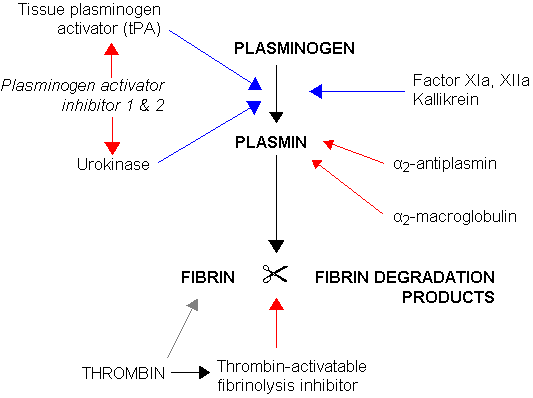Kallikrein
|
WikiDoc Resources for Kallikrein |
|
Articles |
|---|
|
Most recent articles on Kallikrein |
|
Media |
|
Evidence Based Medicine |
|
Clinical Trials |
|
Ongoing Trials on Kallikrein at Clinical Trials.gov Clinical Trials on Kallikrein at Google
|
|
Guidelines / Policies / Govt |
|
US National Guidelines Clearinghouse on Kallikrein
|
|
Books |
|
News |
|
Commentary |
|
Definitions |
|
Patient Resources / Community |
|
Patient resources on Kallikrein Discussion groups on Kallikrein Patient Handouts on Kallikrein Directions to Hospitals Treating Kallikrein Risk calculators and risk factors for Kallikrein
|
|
Healthcare Provider Resources |
|
Causes & Risk Factors for Kallikrein |
|
Continuing Medical Education (CME) |
|
International |
|
|
|
Business |
|
Experimental / Informatics |
Editor-In-Chief: C. Michael Gibson, M.S., M.D. [1]
Kallikreins (tissue and plasma kallikrein) are a subgroup of the serine protease family.
Functions
They liberate kinins (BK and KD) from the kininogens.[1]
It also generates plasmin from plasminogen:

Prekallikrein is the precursor of plasma kallikrein. It can only activate kinins after being activated itself by factor XII or other stimuli.
Genes
There are 15 known kallikreins: KLK1, KLK2, KLK3, KLK4, KLK5, KLK6, KLK7, KLK8, KLK9, KLK10, KLK11, KLK12, KLK13, KLK14, KLK15
Clinical significance
Kallikreins are targets of active investigation by drug researchers as possible biomarkers for cancer.[2][3]
Prostate-specific antigen (PSA; hk3, human kallikrein gene 3) and human glandular kallikrein (hK2) are used as tumor markers for prostate cancer.
See also
References
- ↑ Oikonomopoulou, K., Hansen, K.K., Saifeddine, M., Tea, I., Blaber, M., Blaber, S.I., Scarisbrick, I., Andrade-Gordon, P., Cottrell, G.S., Bunnett, N.W., Diamandis, E.P., and Hollenberg, M.D. "Proteinase-activated receptors, targets for kallikrein signaling" Journal of Biological Chemistry. 281: 32095-112, 2006.
- ↑ Borgono, C.A., and Diamandis, E.P. "The emerging roles of human tissue kallikreins in cancer" Nature Reviews Cancer 4: 876-90, 2004.
- ↑ Diamandis, E.P., and Yousef, G.M. "Human Tissue Kallikreins: A Family of New Cancer Biomarkers" Clinical Chemistry 48: 1198-1205, 2002.
External links
- Kallikreins at the US National Library of Medicine Medical Subject Headings (MeSH)